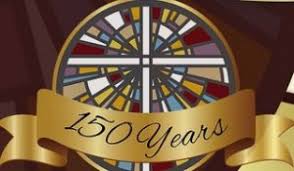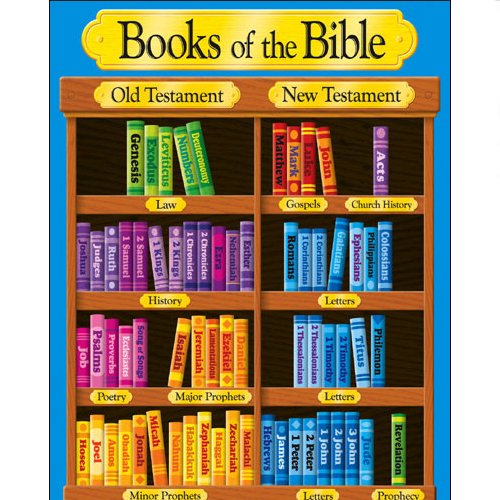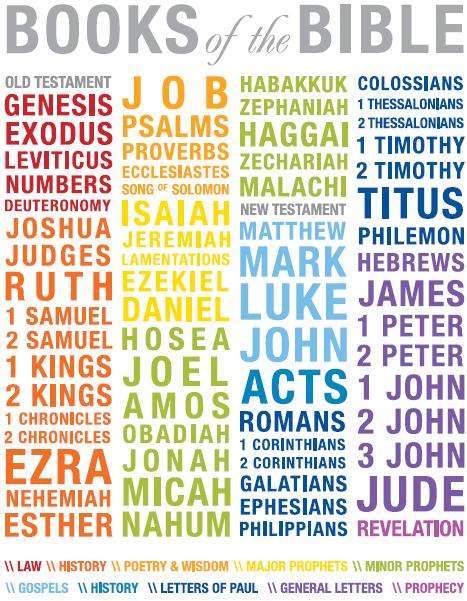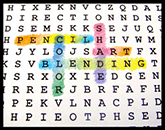



| CONGREGATION |
|  |
| Pastor | ||
| Officers | ||
| KIDS CORNER | ||
History | ||
| Links | ||
Cemetery | ||
The Books of the Bible
  | The 66 books of the Bible are divided between the Old Testament (39 books) and the New Testament (27 books). The word 'testament' means a covenant between God and His people. Covenant means a promise between two parties. Through the Bible we learn about God and how He wants us to live our lives. Religious scholars also talk about the Bible as "canon." In this use, canon means that the books are special and sacred because they were inspired by God and are acknowledged as expressing the truth about Him and our relationship with Him. The Jewish Bible or "Tanakh" is the source for the Old Testament. The first five books of the Old Testament are called the "Pentateuch." In the Jewish faith, they are the "Torah." In about 200 B.C. all of the books in the Hebrew canon were translated into Greek. This Greek translation is called the "Septuagent." It may seem strange to have the important books of the Jewish faith in a Christian bible. They are important because Jesus came to fulfill the Jewish prophecy of a Messiah. The Old Testament helps us understand the history of our relationship with God and, in the New Testament, how Jesus changed it. In early Christianity, each of the Apostles and many other church leaders wrote the stories of Jesus. These books were used by individual Christian communities as teaching guides. Stories and traditions varied slightly from community to community. It wasn't until the 4th Century A.D. that attempts were made to standardize the contents of the New Testament. Eventually agreement was reached about what books should be in the Bible in the West (the Roman Catholic Church). In 367 A.D. the Bishop of Alexandria (Egypt), a man named Athanasius, wrote a letter to the churches in Egypt that listed the books of the New Testament as we know them today. In 393 the Synod of Hippo, led by Saint Augustine, accepted the same books for the New Testament, and in 397 A.D. the Council of Carthage also published the same list. This list of New Testament books was accepted by a Council of Rome called by Pope Damasus I in 382 A.D. As a result of this council, a Latin translation of both the Old Testament (the Septuagent) and New Testament was completed. This translation became known as the Vulgate Bible. Other Christians, like the Eastern Orthodox Church, chose a slightly different group of books for their Bibles. By the time of the Reformation, a number of books in the Septuagent had been eliminated from the Hebrew canon. The Catholic church still used them. Martin Luther thought that the Old Testament should include only those books that were part of the Hebrew canon. Other Protestants agreed, and only the books in the Hebrew canon are part of Protestant Bibles. As a reaction to the Protestant movement, the Catholic Church made the Vulgate Bible the official Bible of the Catholic Church, including the 16 Old Testament books Luther eliminated. These controversial books are printed in a separate section called the "Apocrypha" in some Bibles. Martin Luther also did not like some of the books in the New Testament - Hebrews, James, Jude and Revelations - and omitted them from his translation of the Bible into German. These changes were not widely accepted and the books remain in the New Testament in Protestant Bibles today. Bible scholars often study the books of the Apocrypha and other writings from the early church in order to gain a better understanding of the history of the Jews and Jesus' story and preaching, but for most of us, the Bible tells us everything we need to know! Differences among the Bibles of major religions |
| June 2014 | ||||
 |  |  |  | |
| In the Bible | Coloring Page* | Wordsearch* | Music | Craft Project |
* Opens in a new window
| Top of Page | Kids Corner Home | Last Page Viewed | |
Copyright 2022 Concordia Lutheran Church 6637 80th Avenue North Glyndon MN 56547 | |||
| Site Index | Search the Website | Contact Us | |
